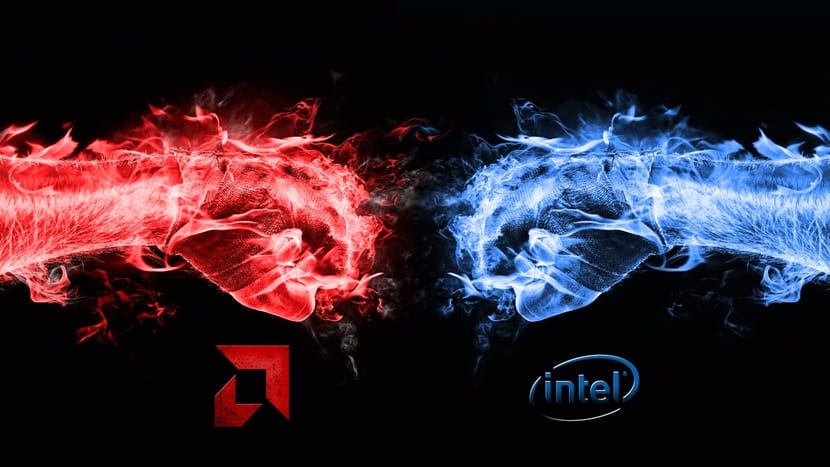
Intel and AMD they are two great companies that have almost been involved in a battle since they exist. In addition, not only have both companies been fighting technologically speaking to be able to overtake the other and obtain a greater market share, but it is the users themselves who have promoted and encouraged this fight, positioning them on two sides according to their affinity for one or the other. .
Therefore, AMD vs Intel It is something that was, is and will be in the field of computing for much longer. Therefore, this time we dedicate this article to this fight and we give you all the keys so that you better understand the story and how this information can help you choose better products for your computer equipment from the Linux point of view, since it is a point of view that is little talked about on the net despite having tons of articles on this topic ...
A Little History
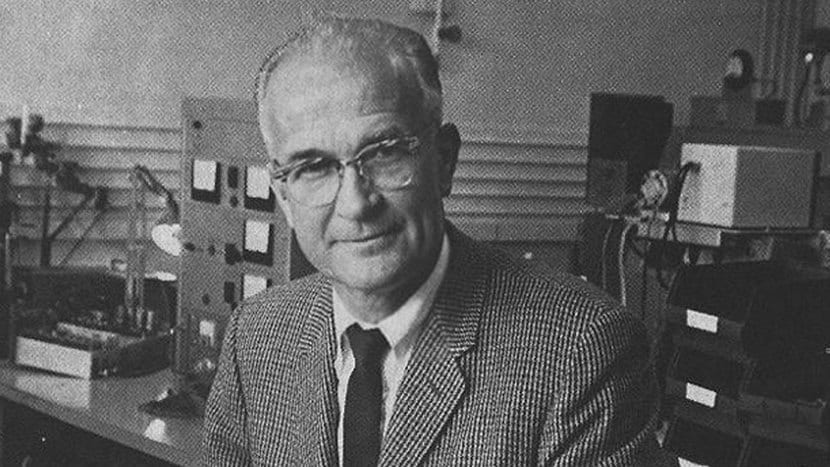
If we go back a bit in history, specifically to 1947 when the history of the first transistor began to forge. From there three great names arise, Shockley, Brattain and Bardeen that history will remember, the three winners of the Nobel Prize in physics for their discovery, which was to unleash an entire technological revolution. But if you know that story, it didn't end too well for one of those leads: Williams Shockley.
Although all three collaborated, the attorneys for Bell LabsThe AT&T laboratories where this story took place decided not to include Shockley in the patent for the invention of the transistor because Shockley's idea was more difficult to defend because of a previous patent in Europe for a known solid-state semiconductor device. . It was the field-effect transistor discovered by Lilienfeld.
This made Shockley fly into a rage and began to develop a project that he hid from his companions, and after leaving Bell he tried to try his luck on the Californian coast. But this unleashed another very different story, that of 1958. At that time, Arnold Beckman decided to partner with Shockley to try to develop an improved semiconductor device using silico and to do it before TI (Texas Instruments), which at that time wanted the same in parallel.
The division became known as Shockley Semiconductor, and Shockley himself began to sign what he called "hot minds," that is, all the best geniuses of the time, such as Victor Grinich, Julius Blank, Jean Hoerni, Jay Last, Eugene Kleiner, Sheldon Roberts, Gordon Moore. , Robert Noyce and Jim Gibbons, among others. But Shockley was a bad manager and a nefarious businessman, and his complicated character and outbursts of aggressiveness meant that the company did not have a great future ...
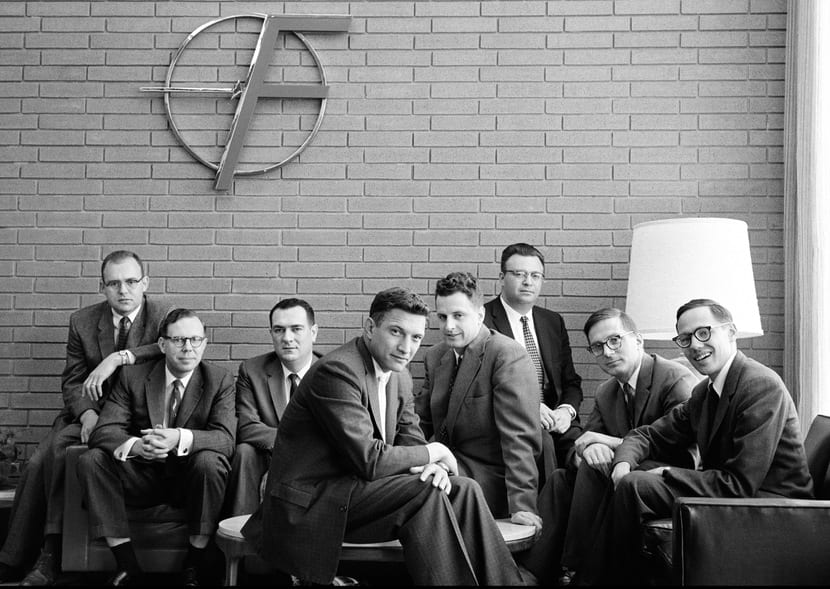
That made those geniuses leave one by one, and the group set course for a better destination in fairchild semiconductor, just 2 km from the previous factory. There, the atmosphere was much more relaxed, there was no leader and collaborative work was encouraged. It soon became a benchmark company and they continued to add great talents to their staff, one of them being the new sales director from 1961, a 24-year-old named Jerry Sanders.
In a meeting of Sanders with Noyce, Sanders would convince Noyce that no one would buy silicon transistors for $ 150, and that they needed to sell them for under $ 2 if they were to succeed. Then Noyce told him that they knew how, they knew how to miniaturize (the 1st planar silicon transistor) and lower production costs to be able to do what Sanders intended. And so it was done, they gradually lowered their price and the success of this mythical company was resounding.
And why am I telling you about all this? Have a little patience, we have almost reached the part that interests us. Following that success, TI's Jack Kilby was also developing a solid-state circuit - the first MESA chip. And in parallel, Noyce headed something similar at Fairchild, the first PLANAR chip. Two very different building philosophies, but the one that has become popular in today's chips has been Noyce's.
After breaking profit records, all was not good news for Fairchild, since there would be a new brain drain, repeating the story of the 8 defectors, or Fairchild's children as they were called now:
- David Talber, Bob Widlar and Charles Sporck were the first to leave Fairchild, to found National Semiconductor.
- Noyce and Moore would also leave it, and together with Andy Grove he would found Intel.
- Hoerni would leave to direct Amelco, which would later be Microchip Technology.
- Jerry Sanders would also be fired, and along with Jack Gifford, Edwin Turney, John Carey, Larry Stenger, Frank Botte, Sven Simonsen and Jim Giles, he would co-found AMD.
- David Allison, David James, Lionel Kattner, Mark Wissenstern, and others founded Signetics.
- Robert Schreiner and others would found Synertek.
- Federico Faggin, after going through Intel, would found Zilog.
- Wilfred Corrigan founded LSI Logic.
- Julius Blank would co-found xicor.
- Etc
That is to say, from the ashes of Fairchild arose what we know today as Silicon Valley. And once the Silicon Valley was established and the two greats began their journey, not everything was equally easy for both of them. Jerry Sanders of AMD always used to say that it took him 5 million minutes to get $ 5 to finance the new company (referring to Intel financier Arthur Rock boasting at the time of having raised $ 5 million to found Intel in only 5 min.
Therefore, Intel got off to a very comfortable start, while AMD has been struggling since day 1. However, AMD has always been able to bring together the best to be able to compete with research budgets much lower than Intel's and that this is not reflected as much in their products, and on some occasions, they have even surpassed Intel in performance. Something that has a x10 merit, I have to admit.
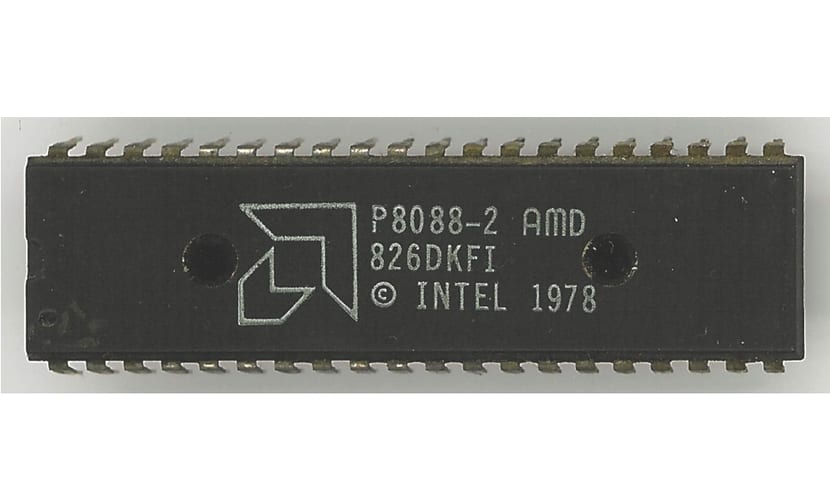
Intel 8088 chip manufactured by AMD
In the early years, AMD would even become an ally of Intel and manufacture company chips under license from IntelThey even signed patent assignment agreements to share ideas. But then they would start creating clones with somewhat higher performance than Intel's, and after creating clones by reverse engineering, they began designing their products from scratch. Then the calm gave way to a storm, and an extreme competition to be the best ...
The rest of the story goes on latent today...
AMD vs Intel: from the point of view of CPUs and their performance in Linux
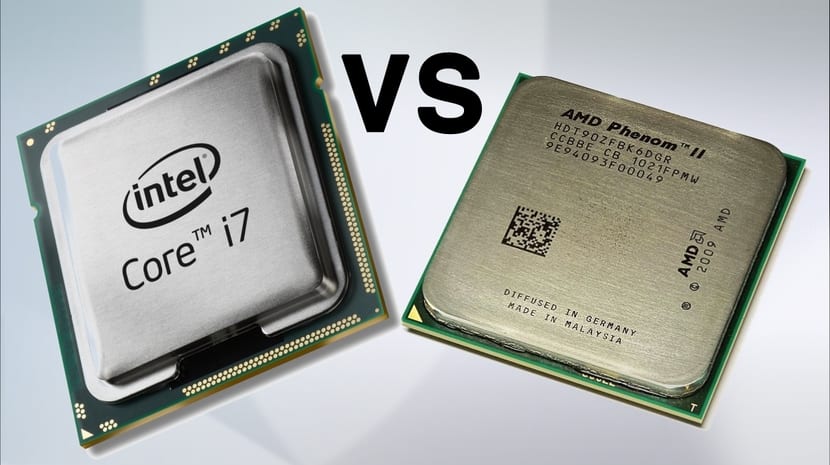
If we have followed the history of both companies closely, we will know that Intel has led the way for most of history. After the era of the colonies, hard times came for AMD, and it was not until the arrival of the K7, when thanks to the immense talent of the engineers who came from DEC and that they had worked on the Alpha (reference microprocessors of the time), they did not position themselves in front of Intel and they took a large market share from Intel.
They were not only better in performance, but also in technology. In fact, AMD has always known how to partner with the best, such as their agreement with IBM that allowed them to be the first to adopt INtel's copper vs. aluminum interconnect technology that led them to overcome the 1Ghz barrier first. After wearing the K7 (Athlon) to the extreme or performance ceiling with the Athlon XP, Intel was able to breathe something easy with its Pentium 4, especially with its HT.
AMD would also reach 64-bit first, with K8, which was the fruit of the same creators of K7, imposing for the first time an ISA redesigned by them to extend the IA-32 and that they named as AMD64 (Although Intel wants to call it EM64T so as not to refer to its rival). But after that, Intel had a lesson well learned and would also hire engineers from the defunct DEC, which gave rise to the Core architecture.
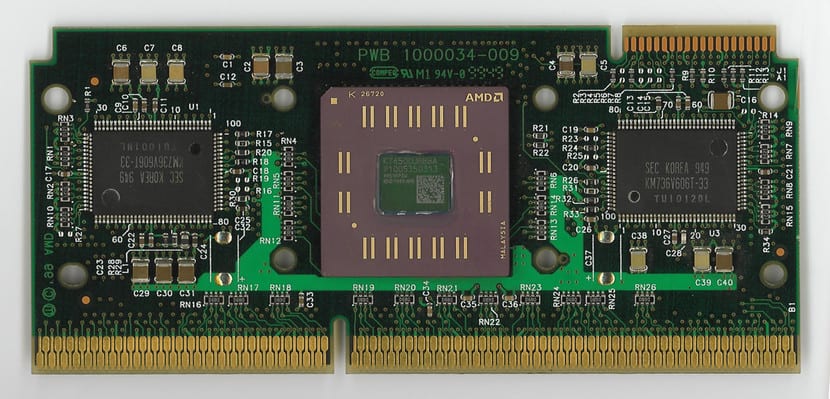
And after the arrival of this, AMD has certainly been behind clearly, and although they have innovated enormously with Fusion, the truth is that it has not given the expected results. That has led to Intel to recover almost the monopoly of the chipsAnd AMD's purchase of ATI didn't help the green company's ailing economy either. After these hard years, AMD tried to recover its best engineers.
People who had gone to other companies like Apple, to create A-Series SoCs, etc., and were able to bring back Jim keller, probably the person who knows the most about high-performance microprocessors, Pappermaster, Koduri, etc. And the huge company that it was, it began to work as if it were a company 10 times smaller in size. They threw away almost all the projects they had in progress.
They only wanted to focus all their energies on GPUs and CPUs, and after years of effort they managed to bear the expected results: Zen. The new microarchitecture that prented to give Intel a lot of headaches and recover the old glory of the K7 era, and the truth is that they have done it, even getting numerous awards that recognize this. AMD has had somewhat more healthy accounts thanks to this.
Intel has long placed a lot of importance on single-core performance these days, while AMD has spent years worrying about it. multi-core performance. With Zen this has changed, and they have put a lot of effort into improving the performance of a single core as well. They have even added SMTs like Intel, jump predictors that use artificial neural networks, and many other innovations that have made the Ryzen successful.
However, despite the effort, it must be recognized that Intel has been doing that for years, years of development and huge amounts of money invested in research and development, so they are still the first in it. So if you are looking for a better single core performance, you must choose Intel. But if you are looking for parallel or multicore performance, AMD is winning the battle, especially since its products are very cheaply priced and feature more cores and threads.
But so you know what it's for better in each case:
- Singlecore performance: it is better for video games and simple programs such as office automation and others that we use on a daily basis.
- Multicore performance: it is better used by certain scientific or more professional programs such as GIM, Photoshop, Blender, and other work for design and 3D.
That does not mean that AMDs behave badly with video games or office automation, far from it, or that Intel will behave badly in others. I'm just saying that Intel's cores are going to be a little better in the first, and AMD's in the second. And as for the price, in most cases, it is more profitable to buy an AMD than an Intel, in addition to that they tend to be somewhat more durable in terms of useful life before failing.
For example, if you plan to invest € 500, you can buy a better AMD microprocessor for that price than if you go to the range offered by Intel, since it has somewhat higher prices. AMD has been able to hit hard when it comes to performance with Zen, but they are also dropping prices a lot to hurt Intel even more. And as if that were not enough, the problems that Intel is having to lower the 10nm in its factories are giving an advantage to AMD that already has announced 7nm chips, with the competitiveness in the market that this offers ...

If you wonder if one or the other has better or worse performance on Linux, the truth is that both offer the best features, and the improvements on kernel architectures are well "pampered" so that the performance offered is the best. They both have groups of developers collaborating on the Linux kernel.
Another question would be the themes of security, that as you know, Meltdown and Specter (and new derivatives), it affects Intel more, and patches to correct vulnerabilities reduce performance in part ...
And finally, add that depending on the user you are, you will need a spectrum or other:
- Low userIf you want the equipment for office automation, email, and surfing the web, with a Core i3 or a Ryzen 3 you will have enough. They would also be worth most of AMD's APUs. I do not recommend acquiring Intel Atom, Intel Celeron or Intel Pentium, since they tend to have poor performance in the first case, and in the last two they have certain characteristics ...
- LxA recommendation: AMD Ryzen 3 2200G 3.5Ghz for its economical price and full support with virtualization technologies, supported extensions, etc.
- Average user: For most users who do a little of everything, from office automation, to multimedia or video games, with a Ryzen 5 or Core i5 you could have enough, as long as the video games are not too demanding.
- LxA recommendation: Intel Core i5-8600K or Ryzen 5 2600X, technical tie. In terms of general performance, they are not that distant, although as we have said, Intel wins in singlecore, but it is true that you can save about € 70 with AMD.
- Professional / GamerIf you are a professional and want a little more performance or consider yourself a gamer, then go for the Core i7 or Ryzen 7 without hesitation.
- LxA recommendation: In this case, for gamers better Intel Core i7-9800X, and if you use it for other professional uses we recommend the AMD Ryzen 7 2700X, which costs half and has only 10% lower performance in some cases ...
- Enthusiastic: If you don't care about money, and you want something that surpasses all of the above, then it may be a good option to acquire a Ryzen Threadripper or a Core i9, although these are only considered a good option for a small group of users, such as certain professionals who are dedicated to design or fans who seek the best of the best ... However, I consider it smarter to buy a Core i7 or Ryzen 7 and renew it as soon as a new one comes out, than to spend a huge amount of money on a Ryzen Threadripper or Core i9.
- LxA recommendation: Either one, both are expensive and both are processing beasts… If you hesitate between models, we recommend the Intel Core i9-9960X and the AMD Threadripper 2990WX. For similar prices you have 16 cores and 32 simultaneous threads from Intel, compared to 32 cores and 64 threads from AMD.
Remember one thing, the first and second numbers in the series are more important than anything else. That is, it attends to the nomeclature so they don't give you a hare:
- Brand Model Group XZZZY: if you look at the numbering, you can see things like AMD Ryzen i5-2700X or Intel Core i7-8700K. You already know that the group i3, i5 i7, i9 or 3, 5, 7, Threadripper refers to the group of users they are intended for. The higher it is, the more performance and expensive it will be. The following number, such as 2 in the case of the AMD example that I have put or 8 in the Intel one, is another of the most important. It refers to the generation, a higher generation means a microarchitecture with more performance. Do not be guided by other values. For example, a Core i7-4000 is going to underperform a Core i7-9000 even if the former is clocked higher. The rest of the numbers, what I have put as ZZZ refer to other benefits such as the number of cores, frequency, etc., so the higher it will indicate that it is more powerful. Finally, the Y is the final letter, a K or X usually indicate the highest frequencies or unlocked for overclocking, while other letters such as G usually distinguish those with an integrated GPU, and a U for low-power ones for notebooks.
I think with this you have a good idea of what you need ...
AMD vs Intel: from the point of view of GPUs and their performance in Linux
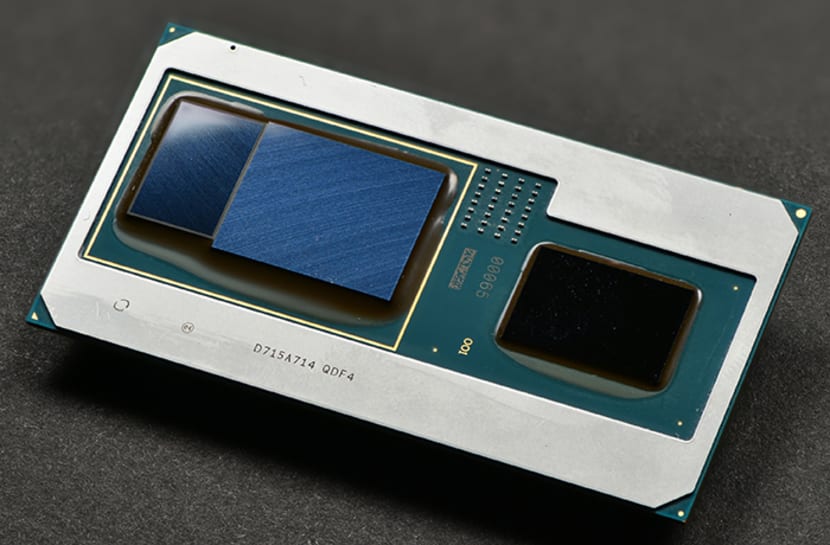
As for the GPUs, things change a lot, in this respect, after the purchase of ATI by AMD, they have been left with the second best GPU designer after NVIDIA. The move disarmed Intel, which was not allowed to acquire NVIDIA, so they were isolated. GPUs AMD have had great performance, well above Intel GPUs. Integrated Intel HD or Intel UHD graphics leave a lot to be desired and are not sufficient for most users.
In contrast, even AMD APUs have pretty decent graphics. Now, if you are looking for a much more powerful GPU for graphic design or gaming, then you should also buy one Dedicated GPU from AMD or NVIDIA. Ultimately, here the battle AMD vs Intel results in a landslide victory for AMD.
- LxA recommendation: Always choose AMD or NVIDIA, but if you are a Linux user, don't hesitate: ALWAYS AMD. Either integrated in an APU or dedicated, but AMD will offer you a better Linux experience, better performance with any driver and will give you fewer problems, making everything easier ...
- For low-performance users: any of those built into A-Series or Ryzen G-Series APUs.
- For medium performance users: AMD Radeon RX 500 Series
- For pro users or gamers: AMD Radeon Vega Series
- Professionals and designers: AMD Radeon Pro WX Series
So much so, that Intel has launched some laptop chips like the one you see in the image above, marked with a G at the end of the series and integrating a AMD GPU and an Intel CPUI mean, they have the best of both worlds. The best CPU with the best GPU to be able to compete with NVIDIA in the portable device sector. Yes, you read that correctly, after years of struggle, both have once again signed "peace" for this collaboration ...
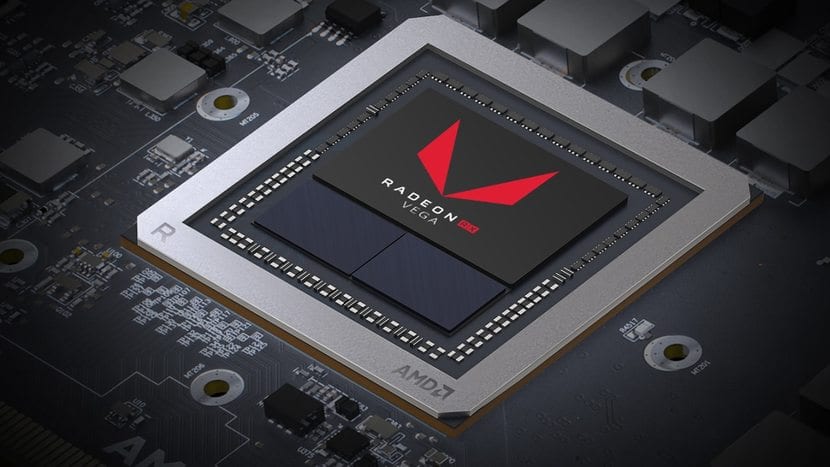
From a Linux driver point of view, you already know that there are proprietary drivers, which in both cases offer performance and all the features available. While in the case of the free ones, things change somewhat, since they are not usually so optimized and the performance will not be so good. However, I have to say that Intel has been working very closely lately on this aspect, and that AMD has already put the batteries in for a long time with results such as AMDGPU, for example.
Years ago, ATI graphics cards had a null Linux supportIf you wanted a good result, you were almost forced to choose NVIDIA for Linux, but lately it seems that the tables have been turned upside down and in many cases, the results from NVIDIA have left a lot to be desired. And that is what the following section is about ...
AMD vs Intel: from a Linux support point of view

Like I said, there are guys from AMD and Intel involved in Linux kernel development so that the microprocessors are properly supported. Therefore, in both cases it is excellent, even though the patches for the vulnerabilities mentioned above have partly "broken" the optimization. In the graphics section, AMD has been more focused on integrating its GPUs than Intel has been.
But a few weeks ago, Intel wanted to get a little more involved and improve your drivers for graphics. But it really matters little, since Intel GPUs are under-appreciated and I don't sincerely recommend them. Therefore, who cares to have good support for an Intel GPU if at the hardware level it does not measure up.
- AMD support: It has a solid support lately, both with its AMDGPU Pro, proprietary, and in its free AMDGPU. Therefore, you will have more than decent results on Linux. In fact, it seems that AMD has gone the open path as its favorites for Linux, and they perform as good as proprietary or even slightly better under certain circumstances. Yes, you read that right, quite the opposite of NVIDIA. Also, if you plan to use NVIDIA Optimus o AMD Switchable GraphicsI have to say that in the case of Windows NVIDIA and AMD work fine, but in Linux you will have it easier with AMD.
- Intel support: They have not been the best at this, because it is not a market that they dominate either. But very recently as I said they have made a little effort thinking about their discrete GPUs.
- NVIDIA support: if we talk about nouveau, its open drivers are much worse than the proprietary ones. In fact, some tests show results for owners that are up to 9 times higher than open ... Something almost inexcusable.
I hope you liked this humble contribution in LxA, and that after this, you can make a better decision when buying hardware for your favorite distro ... Don't forget to leave your comments.
Excellent note, Isaac. I liked it and it serves me a lot.
Thank you!
Very interesting and educational.
On the other hand, please, check the articles a bit before publishing them, there are too many writing errors ...
Very good article, I want to change my laptop and here I found a good guide.
Impressive. Great contribution.